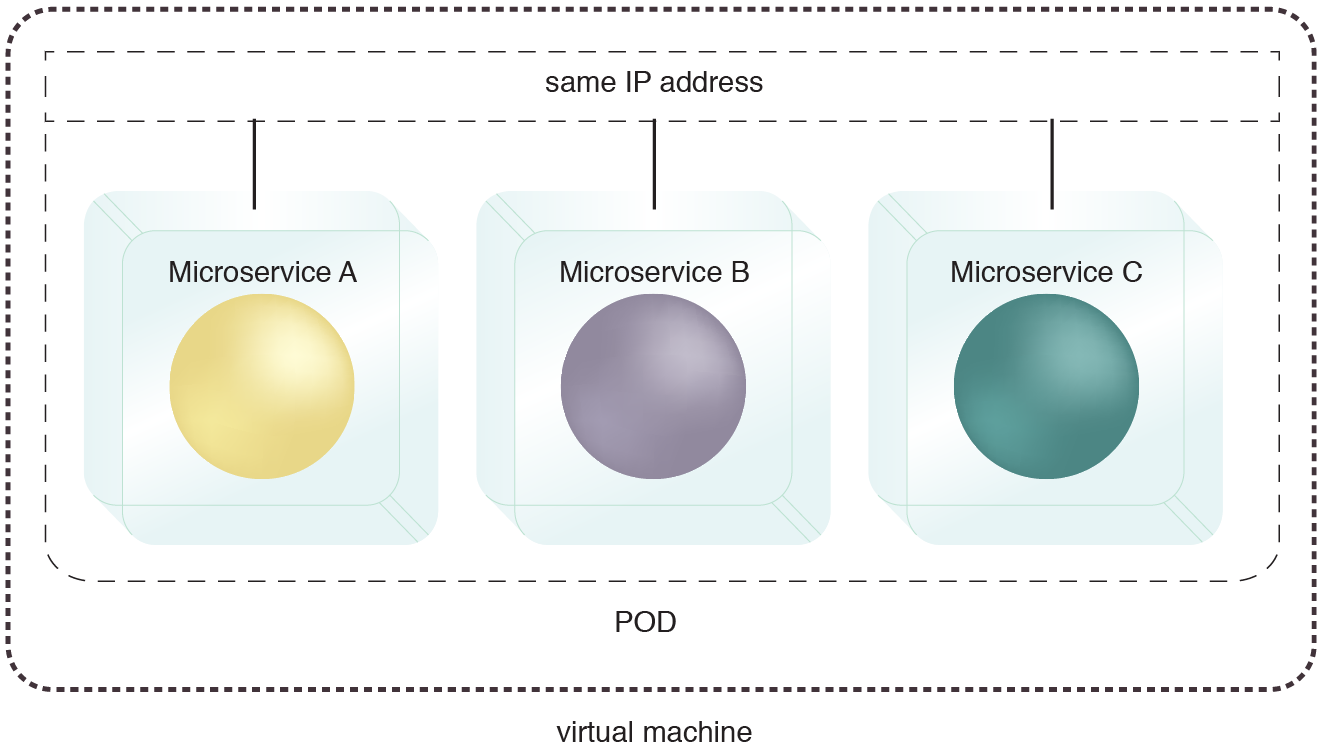Microservice and Containerization Patterns > Fundamental Microservice and Container Patterns > Logical POD Container
Logical POD Container (Erl, Naserpour)
How can multiple containers be deployed so that they share the same namespace and IP address?

Problem
Solution
Application
The services are deployed in a logical pod container, designed to host multiple containers that can share the same IP address. The containers inside the pod can find and discover each other via the host that the pod is deployed on, and can communicate with each other using standard inter-process communication methods, such as shared memory. Containers deployed inside a pod can also share a filesystem, dataset or data storage device.

A single pod deployed on a virtual machine allows the hosted services to share the same IP address. The pod can also be deployed directly on a physical server.
This pattern is applied using a container engine, as explained in the complete pattern description.
This pattern is covered in Module 10: Advanced Microservice Architecture & Containerization..
For more information regarding microservice and containerization courses and accreditation,
visit the Microservice Architect Certification program page..
